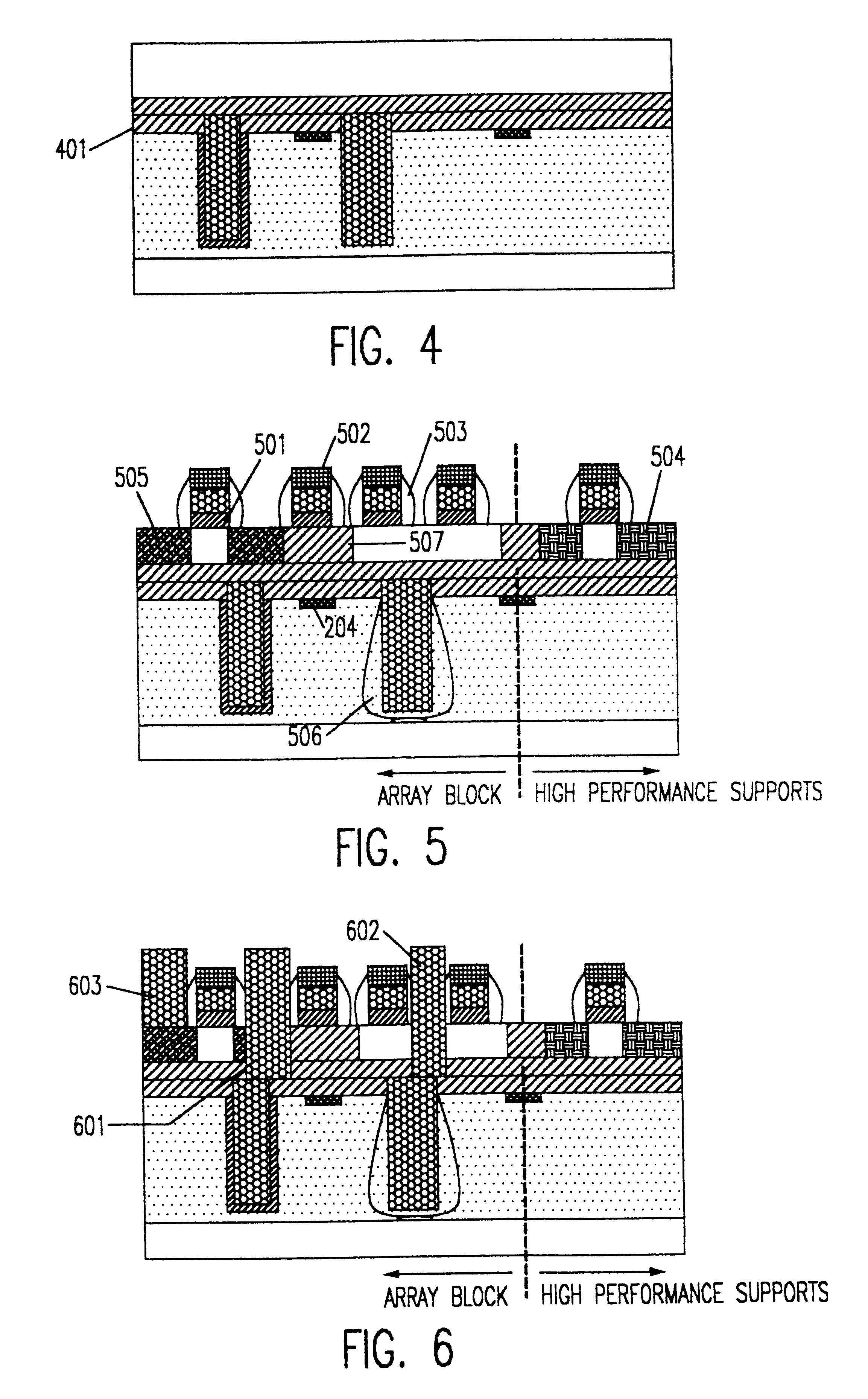SOI stacked DRAM logic
a logic and stacking technology, applied in semiconductor/solid-state device testing/measurement, semiconductor device details, semiconductor/solid-state device testing/measurement, etc., can solve the problem of incompatibility of soi transistors and trench capacitors, large chip area and other issues, to achieve the effect of avoiding the formation of memory cells
- Summary
- Abstract
- Description
- Claims
- Application Information
AI Technical Summary
Benefits of technology
Problems solved by technology
Method used
Image
Examples
second embodiment
the invention will now be described with reference to FIGS. 7-11. FIG. 7 shows a wafer at a stage of fabrication similar to that of FIG. 2A, described above and formed in substantially the same manner. However, FIG. 7 differs from FIG. 2A by inclusion of support devices 701 and array devices 702 which can be formed on the same substrate by processes compatible with the formation of the memory cell array. Alignment marks 204 are provided as described above. Additionally, while connections within and between the array and support sections, it will generally be found convenient to provide connection pads 703, 704 at the surface 705 of a planarized insulator (passivation) layer.
As shown in FIG. 8, an insulator / oxide 801 is deposited and a SOI wafer is bonded thereto by processes such as those described above as shown in FIG. 9. High performance devices can then be formed on and / or in the SOI active layer and connections 901 formed to connection pads 703 (and / or 704) in the manner descri...
PUM
 Login to View More
Login to View More Abstract
Description
Claims
Application Information
 Login to View More
Login to View More - R&D
- Intellectual Property
- Life Sciences
- Materials
- Tech Scout
- Unparalleled Data Quality
- Higher Quality Content
- 60% Fewer Hallucinations
Browse by: Latest US Patents, China's latest patents, Technical Efficacy Thesaurus, Application Domain, Technology Topic, Popular Technical Reports.
© 2025 PatSnap. All rights reserved.Legal|Privacy policy|Modern Slavery Act Transparency Statement|Sitemap|About US| Contact US: help@patsnap.com



